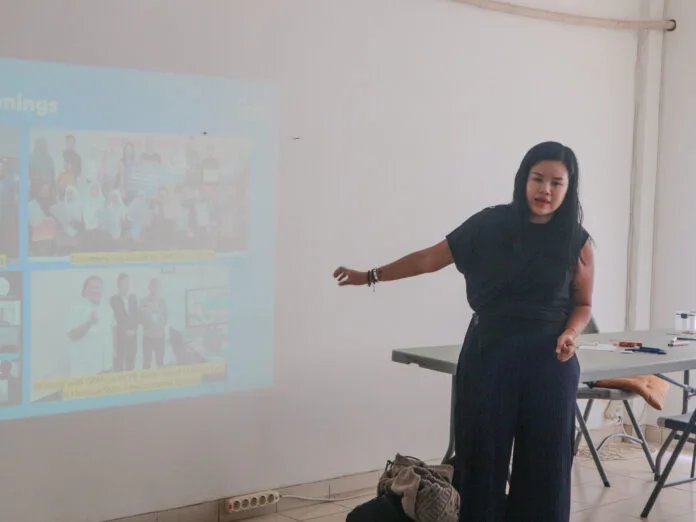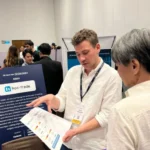本文讲述了 Solve Education! 利用科技改善教育的励志旅程。了解他们如何识别用户需求并成功实现产品市场契合! Janine Teo 是谁? Janine Teo 出生并成长于新加坡,毕业于南洋理工大学,获得计算机工程学士学位。在过去的职业生涯中,她曾创办并出售过科技和快速消费品领域的公司。这些经验让她在竞争激烈的酒店业中积累了丰富的销售、市场营销和收入管理背景。她的职业生涯跨越了八个国家,支持近百个国家的酒店发展,充分融合了创业精神和企业专业知识。 Janine 踏入教育领域的契机来自于她意识到弱势群体面临的巨大教育差距。目睹贫富间教育资源的悬殊深深触动了她,她很快认识到移动技术和游戏化学习可以弥合这一差距。考虑到智能手机在弱势群体中的广泛普及,她看到了通过科技开发一款提高读写和算术能力的解决方案的潜力。 这一洞察促使她利用移动技术和游戏化学习打造了一款让教育变得既可及又有趣的学习项目。因此,Janine 于 2015 年创立了 Solve Education!。在她的带领下,团队迅速通过创新平台如基于 AI 聊天的“Ed the Learning Bot”提供可扩展的教育解决方案。 本文将深入探讨 Janine 和团队在寻找产品市场契合点过程中的旅程。 旅程的开始 是什么火花点燃了你的创业想法?你如何确定它能满足市场需求? Solve Education! 的灵感源自对优质教育缺乏的关注,特别是在贫困地区。这种教育资源的差距激励我利用技术帮助这些群体更好地学习。智能手机在弱势群体中的广泛使用让我看到了移动技术和游戏化学习填补教育鸿沟的潜力,也明确了市场对这一解决方案的强烈需求。 你采用了哪些市场研究方法来分析趋势、竞争对手以及潜在的进入壁垒?这些研究如何影响你的产品战略? 我们通过分析教育趋势、研究竞争对手并识别潜在障碍,进行了广泛的市场研究。这些研究包括直接访谈、问卷调查,以及与本地教育机构的合作。研究结果让我们意识到移动端易用性的重要性和用户对游戏化学习的偏好,这成为了我们产品战略的核心方向。 倾听用户需求:产品市场契合的关键 你是如何验证你的想法的?用了哪些方法收集反馈并确保产品需求? 为验证我们的想法,我们首先与资源有限的社区中的家长和孩子交谈,了解他们的需求。我们与当地学校和组织合作测试应用程序,直接从用户那里收集反馈。这种方式帮助我们确保产品有市场需求,同时指引我们改进解决方案以更好地满足用户需求。 你如何获得首批客户或早期用户?哪些策略最有效地说服他们尝试你的产品? 我们通过与社区团体和非营利组织合作,为现有学习项目免费提供我们的产品,从而获得了首批用户。在社交媒体上展示我们产品的益处并参加相关活动,也是吸引早期用户的有效方式。通过展示明显的学习成果提升,我们逐渐建立了信任,并吸引了更多用户。 面对挑战:实现产品市场契合 能否分享一个基于用户反馈进行关键迭代或改进的案例?这个改进如何增强了产品的市场契合度? 在新冠疫情期间,我们从用户反馈中发现,许多人更倾向于通过 WhatsApp 等聊天应用学习。基于这一洞察,我们将解决方案调整为简单的聊天格式,使其更易用,也更受欢迎。这次关键改进催生了 “Ed the Learning Bot”,该工具迄今已提供超过 2000 万节课,覆盖 45 个国家的 60 多万名年轻人,大幅提升了产品的市场契合度。 在寻找产品市场契合点的过程中,你遇到过哪些最大的挑战?又是如何克服的? 最大的挑战之一是让技术适应用户的多样化需求。我们通过不断收集反馈并根据用户意见改进产品来克服这一难题。建立信任是另一大障碍,我们通过公开沟通并展示显著的学习成果来解决。此外,保持用户的参与度也不易,但我们通过研究用户行为并设计激励策略来提升学习者的积极性。…









